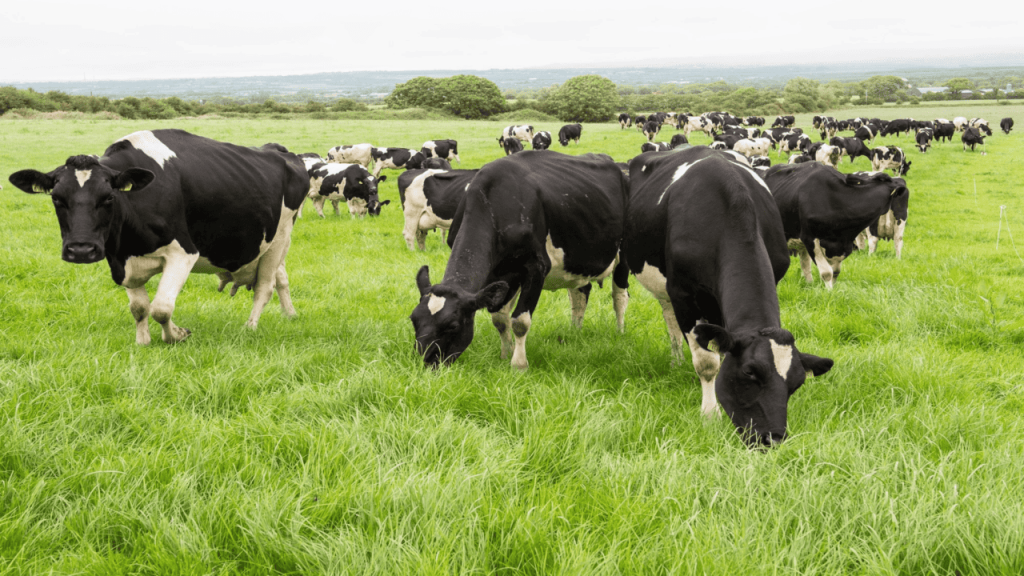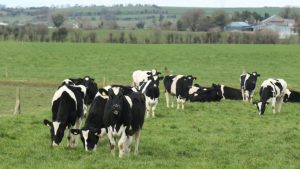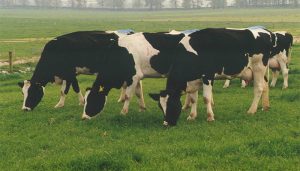
Grass is, and must continue to be the main focus and driver of the Irish dairy sector for us to continue to have a sustainable production model.
2023 will be remembered as a challenging year for dairy farms, as a result of low milk prices, poor weather conditions and impending changes to regulations to name a few.
Although all of these challenges are, and were faced by the sector in 2023, there are also a lot of positives to come from the sector.
There was a significant decrease in farm incomes, with Teagasc estimating an average farm income of €859/ha, which is a fall of 72% on 2022.
This figure is very much an average, with some above and some below this – the figure does not account for taxation, capital repayments and drawings.
It shows that the grass-based model can be resilient during a high-cost, low-margin year.
Irish dairy
Although the impending changes to regulations may bring into question our grass-based production system, if anything we must continue to focus on obtaining as much from grass as possible.
Moving into a high-cost system to maintain cow numbers would be detrimental to the Irish dairy sector.
Grazed grass remains the king of feeds on the island of Ireland based on Teagasc figures – it has a cost of €110/t of dry matter (DM) grown – including land charge.
Grazed grass and white clover has a cost of €99/t of DM grown, while zero-grazing has a cost of €214.
The figures outlined are a comparison of 100 farms between 2019 and 2022, using there e-profit monitors.

Source: Teagasc
Although much of the increase in cost can be associated with rising cost of production due to uncontrollable issues, there was some worrying signs within the analysis.
Based on the data, concentrate feeding rates increased by 271kg/cow, while fertiliser usage decreased by 19kg/ha.

Image: Teagasc
The worrying figure within this analysis was the DM production on these farms also dropping by 500kg/ha.
This could possibly show a lack of focus within some farms, and a small shift towards a more higher-cost production model.
Grass
Some of the environment measures, such as less chemical fertiliser, may result in a reduction in forage production on farms.
If nutrients are managed correctly, and clover is incorporated into the swards, it can be maintained.
The changes to regulations at this stage cannot be changed, so the focus should be on maintaining farm sustainability.
Farm profitability is the biggest factor in this, and by having a high amount of grazed grass in the diet, is the easiest way to achieve this.
Grazed grass, supplemented by concentrates at correct levels, should continue to be the focus moving forward.
Although some farms will have to reduce cow numbers, in other cases the loss of these cow might not be as significant as first feared.
A slight drop in cow numbers mean there should be more dry matter (DM)/head available on the grazing platform, and less concentrates should be needed.
There would also likely be a slight increase in production from the remaining cows, which might mean less of a reduction in milk sales then expected.
Production model
A continued focus on grass and grass utilisation should continue to be the focus of Irish dairy farmers.
Although continuing to maintain herbage production level at previous levels may be a challenge, it can be achieved by good management of swards.
Moving to a higher-cost production model will decrease Irish dairy resilience to drop in milk prices, so this needs to be avoided.
Irish farmers have a unique advantage over most other farmers, and be must continue to use that advantage in our favour.

























